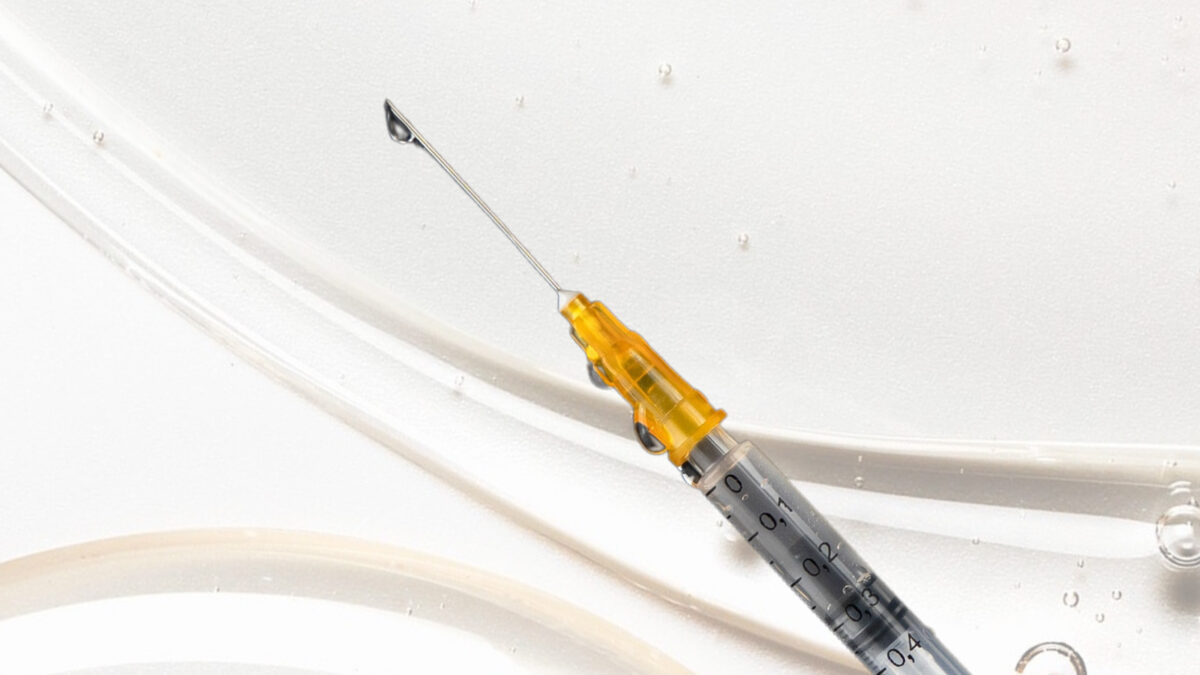It’s one of the most popular cosmetic treatments in the world and has been approved for use since the 1980s, but Botox continues to be a subject rife with myths and misconceptions. If you’re curious about whether Botox is right for you then you no doubt have questions… What does it do? How long does it last? What are the side effects? We quizzed cosmetic injector and founder of Subtil Aesthetics, Bridie Bukorovic about all that and more.
Scroll down for the answers to every question you have about Botox.
What is Botox?
Botox is a brand name coined by Allergan (a pharmaceutical company) in 1992. There are other brands available such as ‘Dysport’ and ‘Bocoture’ but as Botox was the first FDA approved drug to be used in aesthetic treatment of wrinkles, for this reason it’s become a household name when referring to the toxin it contains. Exactly like what Hoover is to the vacuum cleaner!
Botox is a prescription only medication that contains tiny amounts of the highly purified botulinum toxin protein that is produced by the bacterium Clostridium Botulinum. It is given in very small doses by intramuscular or intradermal injections and depending on the indication it is being used for.
What does Botox do?
When injected the toxin works by blocking certain nerve signals that make muscles contract. When used for aesthetic purposes it relaxes the targeted muscle which in turn reduces the appearance of fine lines and wrinkles.
What is Botox made from?
Botox is made from the bacterium Clostridium Botulinum. This bacterium can be found naturally in settings like lakes, forests and soil. It is generally not harmful but if able to grow and multiply at a certain point the spores start producing Botulinum Toxin which is the deadly neurotoxin this is responsible for botulism. In a pharmaceutical setting Botulinum Toxin is grown in controlled conditions and then highly purified to remove all the other bacterium.
Who can have Botox?
The majority of the time most patients are able to undertake Botox injections but there are certain instances when we will not carry out a treatment.
Treatment should be based on a thorough consultation, so if it’s not suitable for you your practitioner will explain why. If when you use your facial expressions no new lines are formed or the existing ones do not worsen, then Botox is not suitable for you.
The straight ‘no’ is for those under 18 (your muscles aren’t developed and your body needs time to stabilise before undertaking Botox treatments), or those pregnant or breastfeeding (in theory there is no danger here, but we’d rather be safe in this instance), and those who are allergic to eggs (the same protein found in eggs occurs in Botox). There are other contraindications such as neuro muscular conditions or certain medications you may be taking.
Where or who should you get Botox from?
I’d suggest finding a provider whose aesthetic and philosophy aligns with your own. Personally, I’d look to medical practitioners and those with a reputable training history that will act responsibly and ethically, especially if complications arise. Also logistically it’s better to go somewhere you can easily travel to as it’s likely you will have at least two visits for your treatment within a short space of time.
Be wary of offers or discounts, or prices that seem to-good-to-be-true! They probably are. All of the three FDA approved brands of Botulinum Toxin are priced similarly and do not come cheap, trust me. The product alone is over £100 and should be prescribed to an individual patient. It’s widely known that some beauty providers are using cheaper imported toxin which is completely illegal practice…so do your research and ask about the product that is being injected into your face!
What are some of the common misconceptions around Botox?
That having Botox will leave you expressionless or “frozen”. When administered properly by a medical practitioner the result should always be undetectable, in that, people shouldn’t know you’ve had it done, only that maybe you look more refreshed. We aim for softening expressions rather than erasing them completely.
The worst one misconception that we administer it to lips to make them bigger. Botox is a neurotoxin and adds no volume to your face whatsoever, that’s dermal filler and it’s a whole different area of aesthetics. It can only be used to reduce to decrease the activity or ‘strength’ of a muscle. But of course there are times when the two can be used in combination.
That Botox is a ‘vanity’ drug; Botox is actually widely approved within the NHS for various medical treatments. These are FDA approved treatments for things such as neck spasms, hyperhidrosis (excessive sweating), strabismus (lazy or crossed eyes) and migraines!
What would you expect to see after getting Botox?
Nothing much! No seriously, don’t start panicking that nothing looks different the first time Botox is injected, it takes time to act. It will be around two to eight days before you can start seeing a difference. But after two weeks you will see the full effects of your Botox treatment. Of course timings vary between individuals. A good practitioner will schedule you in a review after two weeks to see if the treatment has achieved the desired outcome. If you do require some additional Botox it is not common to be charged within this two week window.
You will probably see some evidence of injection point marks, slight skin wheals (a patch of the skin that’s elevated, discoloured and can be itchy), bruising is always a possibility. Some people get headaches.
How long does Botox last?
Unfortunately, as much as we wished it lasted forever, it doesn’t. You’re looking on average about three to four months before the toxin wears off completely and those muscles will start working or contracting as normal. There will be some patients who get between four to six months and others who get around two months, it does depend on the individual and results can vary.
Are there any side effects or risks to Botox?
Although unlikely it is possible for the toxin to ‘spread’ or ‘leak’ to muscles it wasn’t intended to act upon. This can cause problems like double vision, watery eyes, droopy eyelids, facial asymmetry (droopy brows or faces). Due to the nature of Botox these problems are not permanent and will wear off as the effectiveness of the drug does but that can take time.

